It’s a little over a week until the Berlin Major starts, but the Lima Major feels like it was only yesterday. That said, there’s going to be massive chaos.
After the second DPC tour and some third-party events like DreamLeague, there’s already been some changes in how teams have been performing. A significant patch is coming out pre-event and will be throwing a spanner in the works for most teams’ well-oiled strategies. Many spectators will be pleased to see how teams are forced to adapt when thrown in the deep end — and it is an interesting situation to see how it’ll affect the existing power rankings.
As we preview the Berlin Major, let’s first take a look at what teams have changed since the last one, and then how we imagine the other teams might shuffle around.
Western Europe: Entity out, OG in
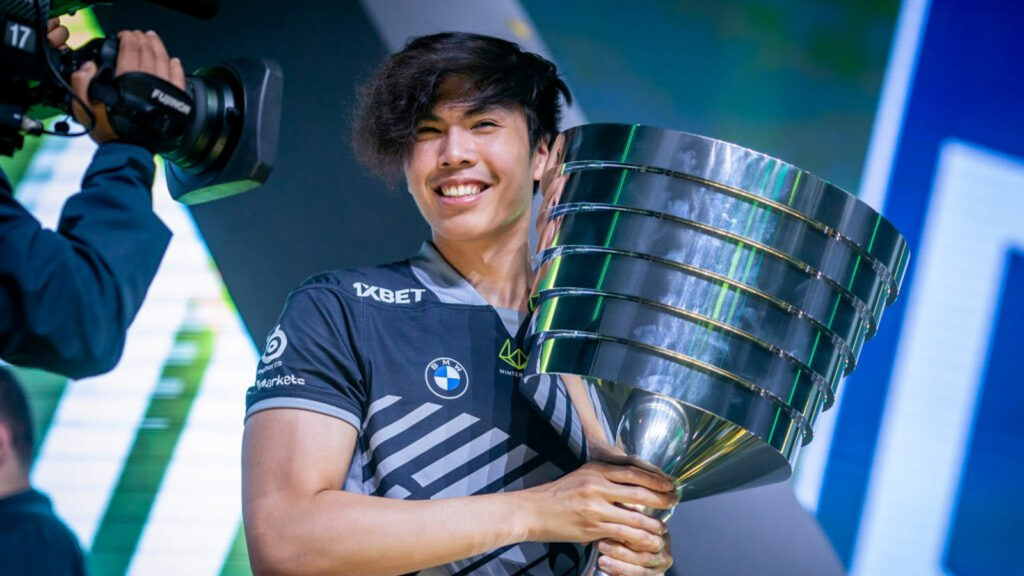
In the Tour 1 Regional League, it was Entity and Tundra who qualified over OG in some never-ending tiebreakers. Entity went on to a top-six finish at the Lima Major, and seemed to have found their footing. That was until the Tour 2 DPC Regional League, where OG stole back a slot, leaving Entity Major-less and in a relegation playoff. Such are the shenanigans of Western Europe Division 1.
Whilst OG’s regional results were middle of the pack (3-4 in round-robin series, 6-8 in games), one has to remember how dominant Western Europe has been on the international stage. DreamLeague hasn’t helped clarify this: in Group Stage #1 they went 3-3 (in games) against WEU teams and 6-3 against all other teams. OG’s potential is high, and if the upcoming patch were somehow postponed, I’d expect them to place at least top eight, probably top six and higher.
China: EHOME, Knights out; Xtreme Gaming, Invictus Gaming in
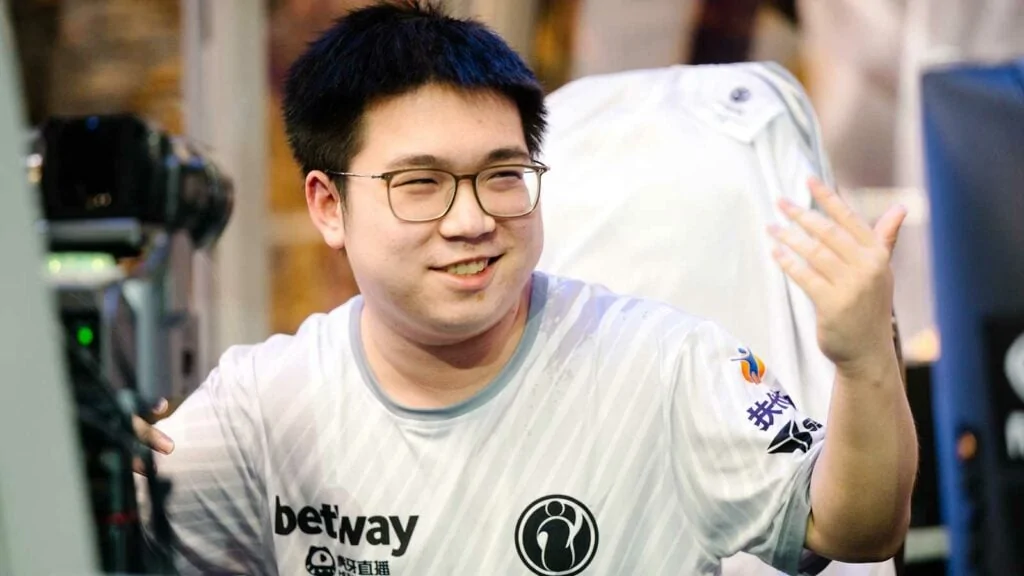
The Chinese competitive scene was chaotic in March after Perfect World, acting in tandem with Valve, announced a ban on 47 players, including the Knights and EHOME squads for “foul play.” This came after a string of accusations of match-fixing and cheating made against multiple teams within the region.
In Lima, Knights and EHOME both came bottom of their groups (1-15 and 3-13 respectively) so it seems a given that Xtreme and IG will perform notably better. This is possibly a do-or-die situation if China wants three or more teams at The International.
Unlike in Lima, LGD should be playing with its full roster without a stand-in offlaner. If they are a regional benchmark (tied-ninth in Lima) then there is certainly potential for at least two Chinese teams in top eight.
SEA: Geek Slate out, Team SMG in
SEA as a region surprised me in Lima, mostly because of their isolation from international competitive Dota. With the demise of BTS, there are relatively few events for them to participate in with teams from other regions. Geek Slate lost a playoff survival tiebreaker against Hellraisers in Lima, but would’ve met Talon in the Lower Bracket had they won it and advanced to the playoffs.
Team SMG had a strong DPC Tour 2 result that might suggest they’re on par with Execration but the situation is a bit more complicated. Counting in their favor is their individual experience, but counting against them is a lack of competitive matches as a unit (they were not at DreamLeague). The new patch can help this out a bit as it’s a soft reset in some ways, but that doesn’t do much for a period where building confidence can be crucial.
- SumaiL reportedly standing in for Team Aster at the Berlin Major
- Valve drops Dota 2 patch 7.33 — New Frontiers — on time, and it’s a big one
The returning teams
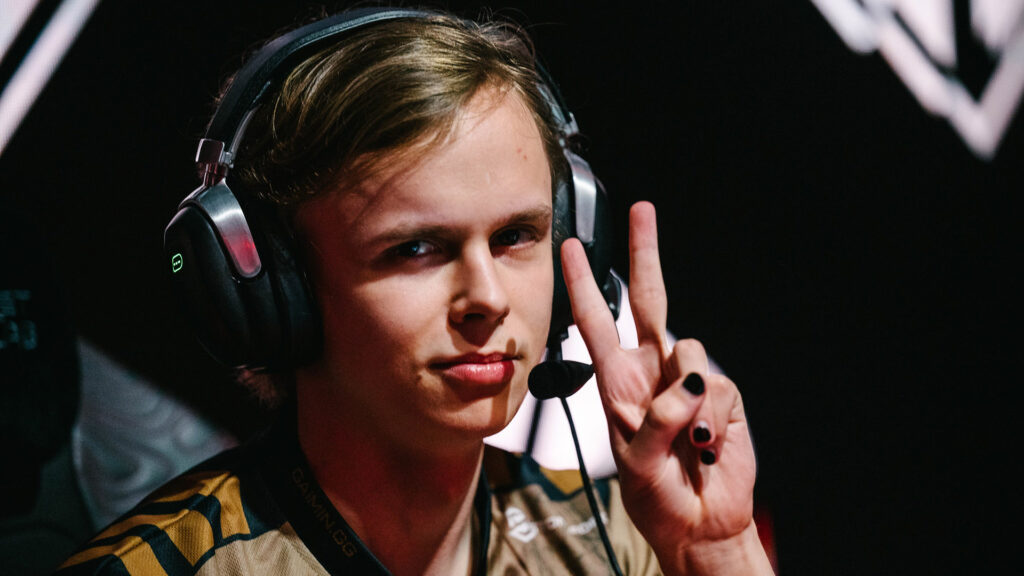
With such a consistent field (14 Lima teams returning) one might expect to see a roughly similar outcome in Berlin, but it’s a lot more complicated for some teams.
DreamLeague’s first Group Stage showed that the ex-Hellraisers squad and Talon Esports struggled to convert games. At the Lima Major, Talon was 11th overall in average gold difference at the 15-minute mark (-364), but in DreamLeague they were 6th (-154). This improvement suggests their laning stage and early game were slightly more stable.
With their group-stage scores deteriorating between Lima and DreamLeague (10-6 and 5-9 respectively), there could be some combination of multiple factors: their ability to make comebacks when down gold got worse, their ability to hold leads got worse, or perhaps just their luck got worse.
Execration and Team Spirit both also failed to make the cut in DreamLeague after losing tiebreakers. But given the closeness of their situations, I don’t think any alarm bells should be going off. Gaimin Gladiators, Shopify Rebellion, Evil Geniuses, and Team Liquid seem to be the consistent teams over DreamLeague and The Lima Major and should remain favorites.
The double-edged sword of versatility
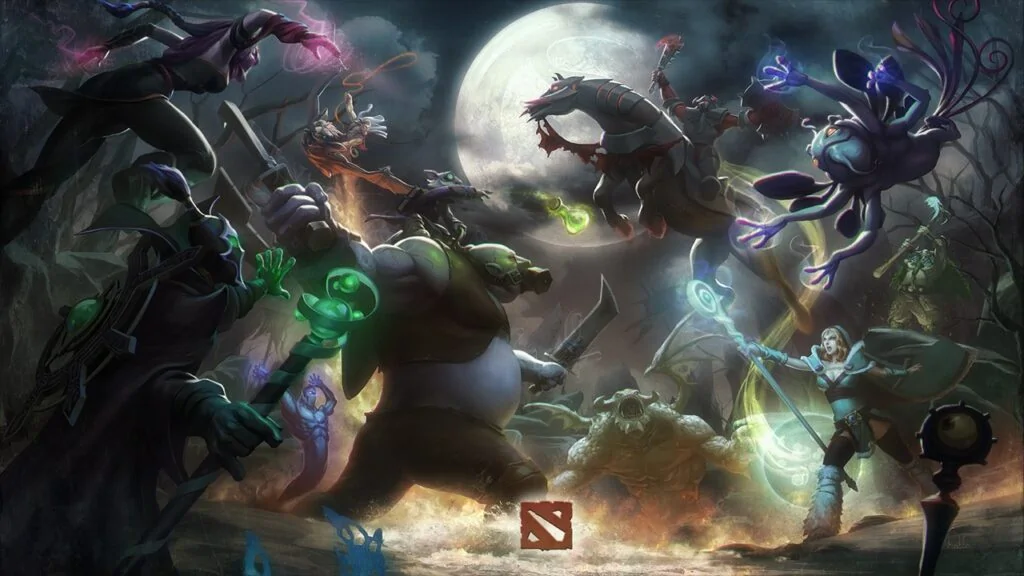
Given the major patch announced, nobody is sure what to expect and how teams will be affected by it. The buzzword which always comes up is “adaptability” — although even with the minor patches over the last few years, the game has changed a lot.
One metric that seems natural to investigate is hero diversity for the team — how many unique heroes they’ve played in the last while. If we look at games since the start of the second DPC Tour, there are a few interesting things.
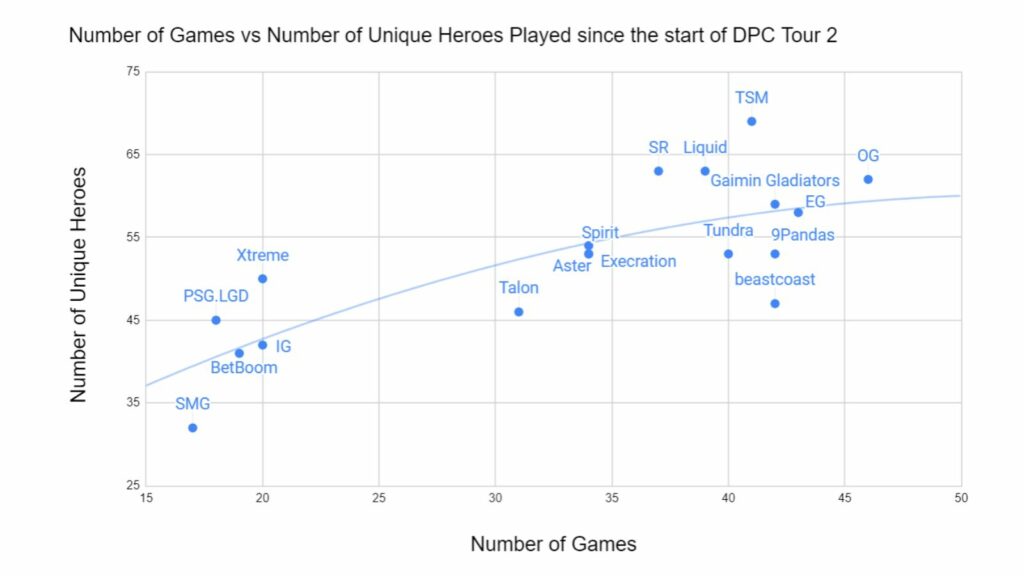
There are two clusters: a small group of teams with a relatively low number of games (15-20) including 3 Chinese teams (LGD, Xtreme, IG), a SEA team (SMG), and an EEU team (BetBoom Team) compared to the rest of the pack. The small cluster is harder to predict: we have less information on them, but except for SMG, they seem to be picking relatively diversely.
The pack itself has a few outliers. Beastcoast’s 1.12 avg unique heroes per game is the furthest below the logarithmic line of best fit, and TSM is the furthest above it. Also note that three of the Lima Major top four (Gaimin, Liquid, SR) are all close together and above the curve, whilst Talon has not played as much and is picking fewer unique heroes than the average.
Since Dota is such a complex game, it might be misleading to look too far into this. Some teams excel because of their versatility — the ability to pick such a broad set of heroes means it’s more difficult to effectively target out strategies, which for other teams might hinge on one or two key picks.
For other teams, their strength is having a small, well-practiced pool of heroes just big enough to avoid getting completely banned. In some games, they will be playing a hero that’s maybe not the best overall pick in a vacuum, but it’s a hero that the player and team are super comfortable playing with.
A larger or smaller hero pool can also just be a side effect of experimentation —or the lack of it — in official matches. I believe that the more versatile teams will be at a slight advantage, provided the hero changes are not truly massive.
Overall, the patch will likely shrink the skill difference towards the mean, allowing for upsets at every step.
READ MORE: Win up to a year of Dota Plus in the ONE Esports Berlin Major Pick ‘Em Challenge


